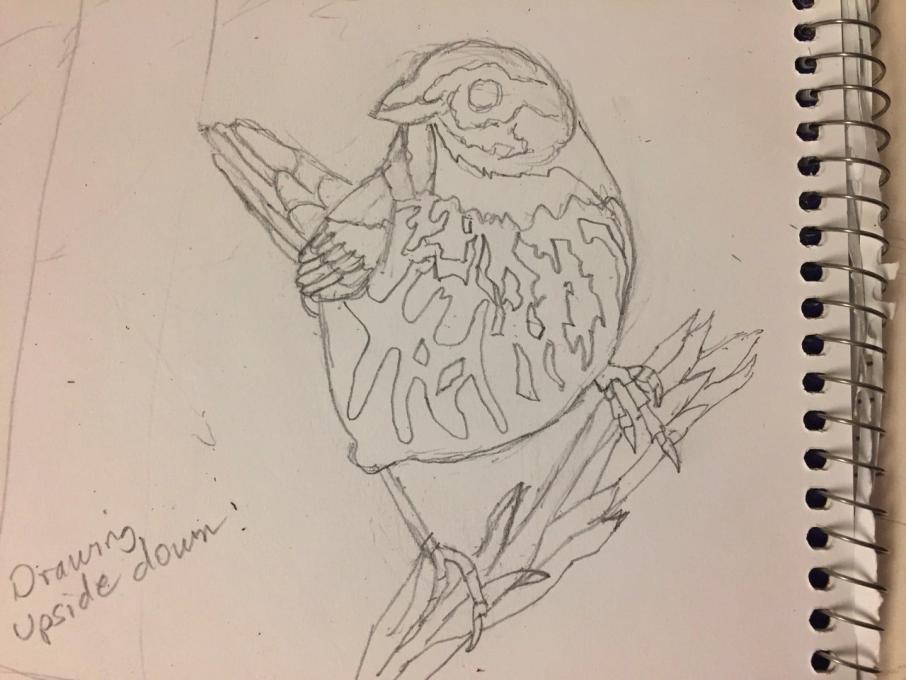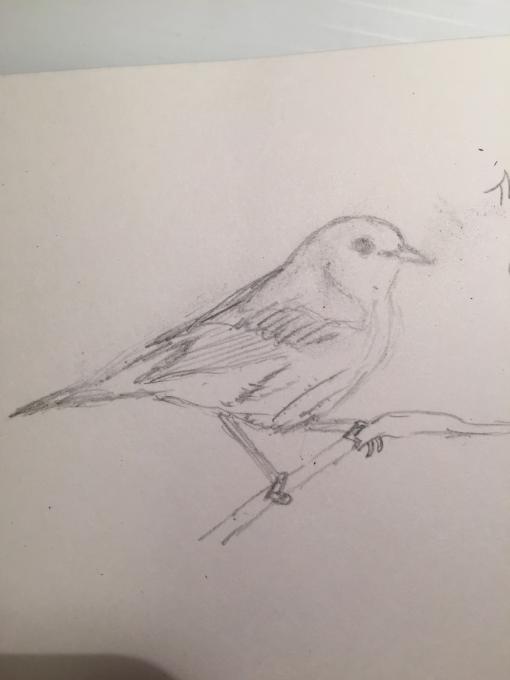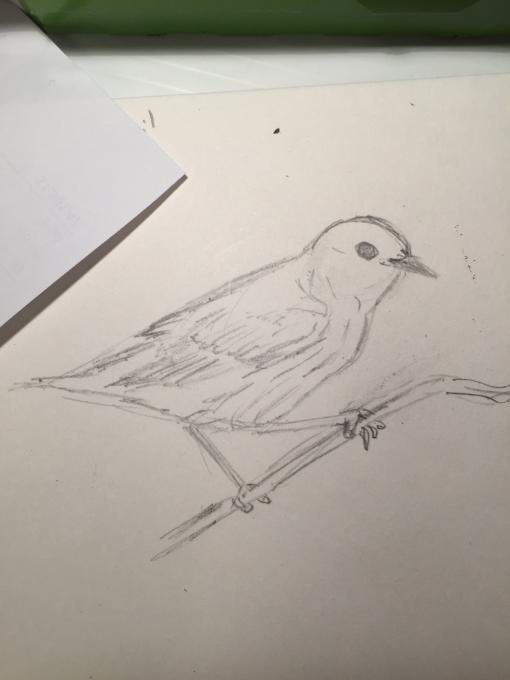Margaret
Forum Replies Created
Viewing 10 posts - 1 through 10 (of 10 total)
-
MargaretParticipantI have been trying to make a xmas card recently and have used both wet on wet and dry brush. I like both techniques and have always used them in the past. Wet on wet is hard in that you have to have the paper just wet the right amount or it becomes dry before you want it to. With dry brush or dry brush on wet, if you make a mistake you can't correct it. I enjoyed wet on wet copying the Mallard, its fun to see how it works. You can't go too wrong as there are no hard lines. I find that if I just use a wet brush on dry my photo is a bit messy looking. It's harder to make it look natural.


 in reply to: Getting Comfortable with Watercolor #762408
in reply to: Getting Comfortable with Watercolor #762408 -
MargaretParticipantI was working on this Junco for a xmas card and used both wet on wet and dry brush techniques. I like using both together. When I just use dry brush, it tends to get messy looking. See the example of the garden scene. Wet on wet isn't easy either because if the paper dries and you don't notice, the paint forms a hard edge where you don't want it to. I enjoyed working on the mallard using wet on wet. I like doing flowers wet on wet too.


 in reply to: Getting Comfortable with Watercolor #762317
in reply to: Getting Comfortable with Watercolor #762317 -
MargaretParticipantNot my first experience but haven't used them in years. In the scene I couldn't get that bright blue sky, mine was more muddy. The orange and yellow and greens are harder to copy. The greys are easier to mix as I have Payne's grey. It mixes and gave me some colours for the browns on the rosy finch. I didn't have too much trouble with the pink using grey and white and rose madder.

 in reply to: Capturing Nature’s Color Palettes #762305
in reply to: Capturing Nature’s Color Palettes #762305 -
MargaretParticipant

 When I started with the quick gesture drawing of a still object timed I found that much easier and I liked it better than trying to capture the moving image. I found the Pintail Duck impossible for myself and gave up. The Mourning Doves at the feeder were ok because they sat long enough to get something on the paper. When I refined both the Wren and the Coyote original gesture drawing I was pleased to see that the proportions were not too bad. With the Wren I could see right away that the space between the head and tail ( the negative space) was not large enough and I corrected that distance. Over all I got the head a bit too big for the body but decided to leave that as a reminder to myself. The bulrush and the bill were out a bit and I corrected that. A few other corrections were needed too but they were obvious and easy to change. I liked doing it this way. I used all the techniques you have taught us, first the quick gesture drawing, measuring the negative space between parts of the object, using my pencil to gauge proportion and slant, the shading teqnique for depth, short strokes with my pencil......I also used all the same techniques with the coyote to refine and I could refine more, I think the head is a bit small but it wouldn't take much to enlarge it a bit. Using negative space is very useful for me. When I use it to refine, I can see at a glance where I need to refine.
in reply to: Giving Your Drawings Depth #760214
When I started with the quick gesture drawing of a still object timed I found that much easier and I liked it better than trying to capture the moving image. I found the Pintail Duck impossible for myself and gave up. The Mourning Doves at the feeder were ok because they sat long enough to get something on the paper. When I refined both the Wren and the Coyote original gesture drawing I was pleased to see that the proportions were not too bad. With the Wren I could see right away that the space between the head and tail ( the negative space) was not large enough and I corrected that distance. Over all I got the head a bit too big for the body but decided to leave that as a reminder to myself. The bulrush and the bill were out a bit and I corrected that. A few other corrections were needed too but they were obvious and easy to change. I liked doing it this way. I used all the techniques you have taught us, first the quick gesture drawing, measuring the negative space between parts of the object, using my pencil to gauge proportion and slant, the shading teqnique for depth, short strokes with my pencil......I also used all the same techniques with the coyote to refine and I could refine more, I think the head is a bit small but it wouldn't take much to enlarge it a bit. Using negative space is very useful for me. When I use it to refine, I can see at a glance where I need to refine.
in reply to: Giving Your Drawings Depth #760214 -
MargaretParticipantI found this very helpful. I will use it all the time now. And, yes, it's easier to measure some subjects compared to others.in reply to: Getting the Proportions Right #759934
-
MargaretParticipantIt's hard and I'm not sure what I get out of it. I like the idea of capturing the moment though. Usually I try and remember the moment I want to portray or capture it in a video or photo.
 jI'm not s in reply to: Capturing Behavior – Gesture Drawing #759926
jI'm not s in reply to: Capturing Behavior – Gesture Drawing #759926 -
MargaretParticipantI didn't mind drawing upside down and I didn't view the subject as a bird, more a collection of shapes and lines . Also, I liked finding out how negative space helped me draw the proportions better. I found the exercise hard in that my focus kept shifting and I'd lose where I was going especially in the breast. I didn't get it right and ended with lines with no place to go. My eyes got quite tired trying to focus on the details. That is frustrating and I erased and tried again then gave up.
 in reply to: Drawing What You See – Upside Down Drawing #758774
in reply to: Drawing What You See – Upside Down Drawing #758774 -
MargaretParticipantI decided it was too cold for me to sit outside comfortably. I've been doing Feeder Watch and often watch the backyard where I have a water bath and several feeding stations. The Red-breasted Nuthatch that appeared for the first time a month ago has fascinated me. Seeing RBNU in the forest trees is very different. I have been surprised at their tiny size, only 4 inches, smaller and slimmer than the Goldfinches and House Finches that come to my feeder. Everyone says how cute they are with their behaviours of sneaking in so quickly you hardly see them and it's so true. They are adorable! Drawing the 3 birds together I noticed how different their patterns are, how different their bills are even though they are all seed eaters. The Nuthatch has such a long pointed slender bill but I know that's for digging and poking into tree bark for bugs etc. They also hide their food in bark crevices. I think when they fling themselves into my feeder and swoop out so fast I can hardly see them that they are hiding the seeds in the Ponderosa Pine tree that is next to the feeder. I should add the Black-capped Chickadees that come to the feeder to show how large they appear beside the Nuthatch. I want to do this sketch again but add and compare the BCCH and add some water color paint.
 in reply to: The Power of Comparison #756165
in reply to: The Power of Comparison #756165 -
MargaretParticipantI felt fine about drawing from the photo. It took a long time to get the dimensions of the bird right and I don't have it right yet but I stopped after making 2 copies of it. I noticed the wing structure more and where the wing starts and ends at. I noticed how far back the legs are situated on the warbler. I noticed the placement of the eye in relation to the bill. I tried to notice the relationships in the anatomy of the bird. I find the feathers in the wing difficult and want to simplify it. In a photo I think it's harder to simplify than if I had been copying a drawing. Would it make a difference when nature journaling? Well, good question. That's why I'm taking the course. I want to be more exact in the drawings I make of birds. Wings and feather structures have defeated me and I simplify as much as possible. It doesn't make a difference to my nature journaling in so far as I'm usually trying to tell a story, something that happened and is of interest to me, some behaviour or event I want to capture. Still, I would like to have a better idea of how to draw the bird more accurately.

 in reply to: Jump Right in! #749995
in reply to: Jump Right in! #749995 -
MargaretParticipantI like to do nature journaling exactly like you have done above. It's simple and very effective. Beautiful. I like what you say about wanting to find a balance between loose water-colour and detailed line. Me too!in reply to: Style Your Journal Your Way #749782
Viewing 10 posts - 1 through 10 (of 10 total)
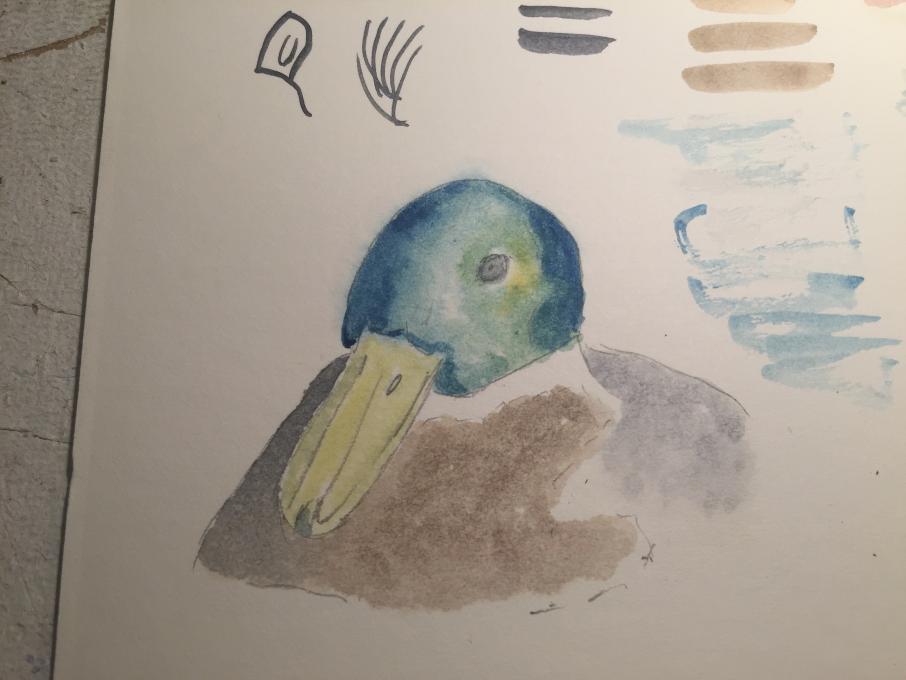

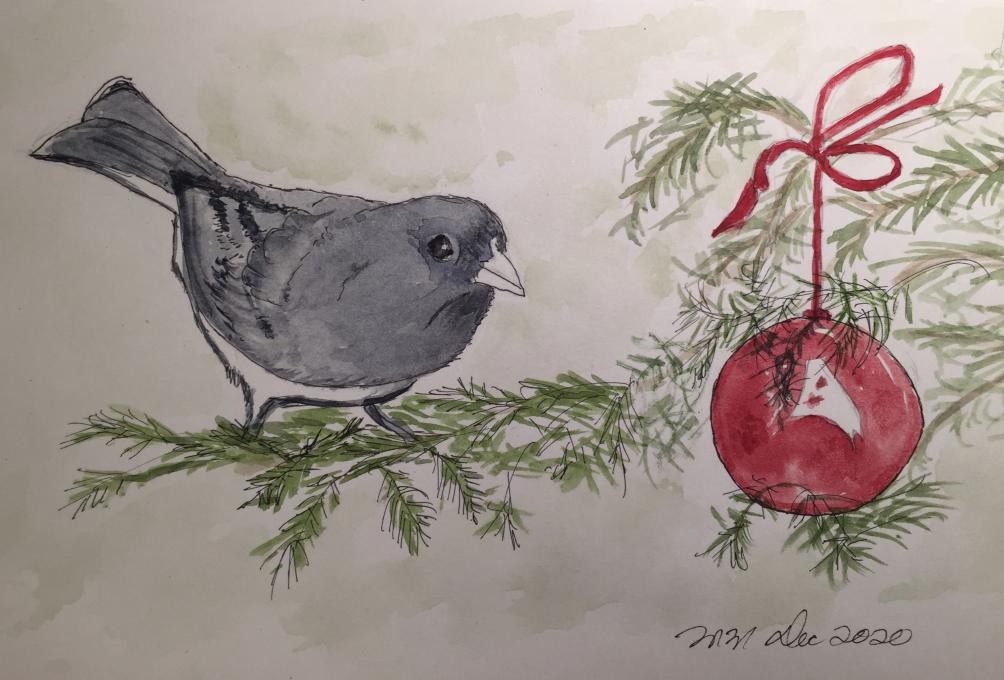
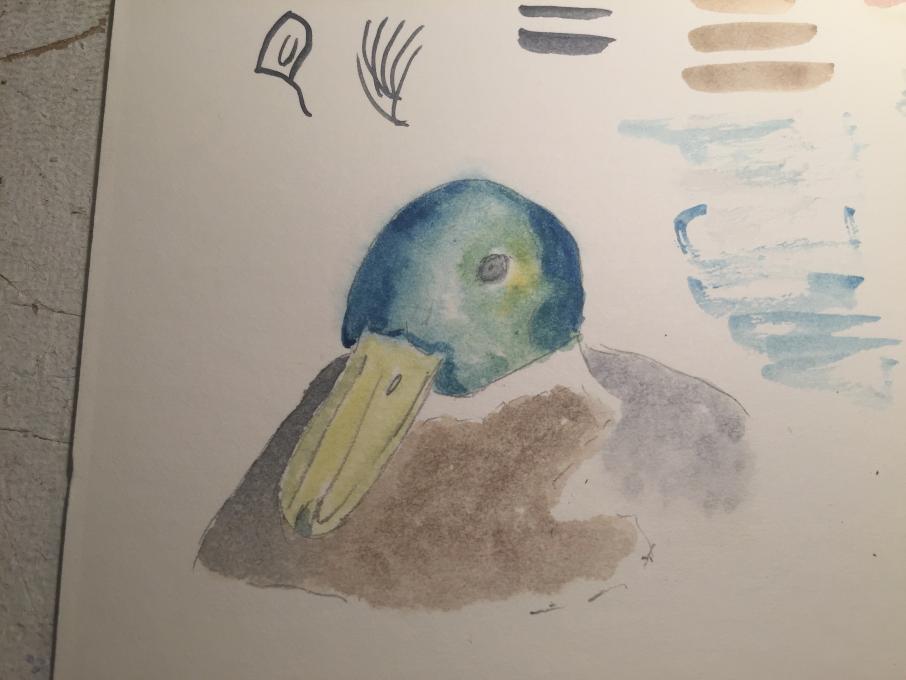
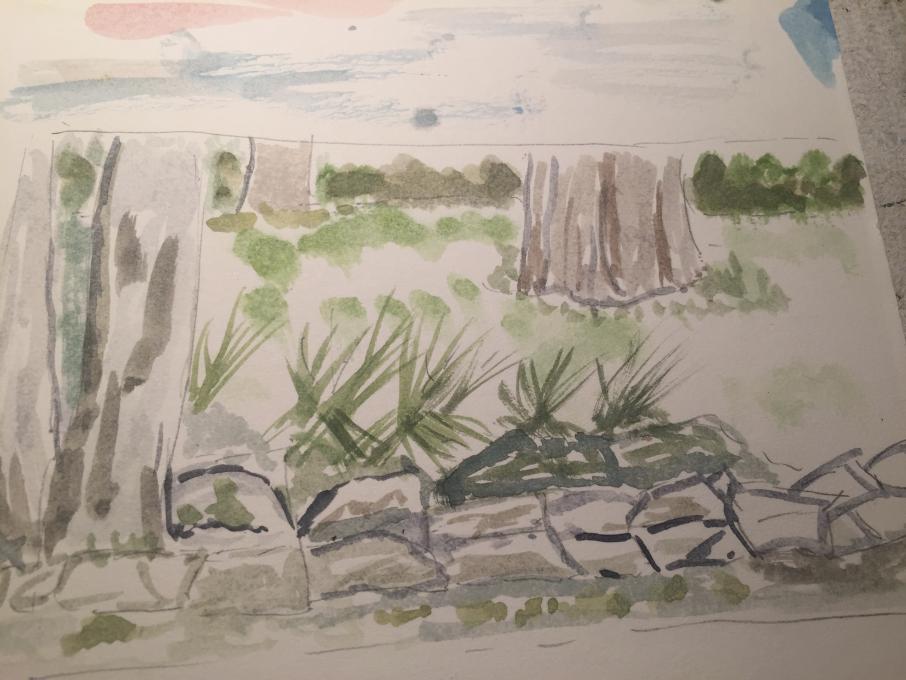
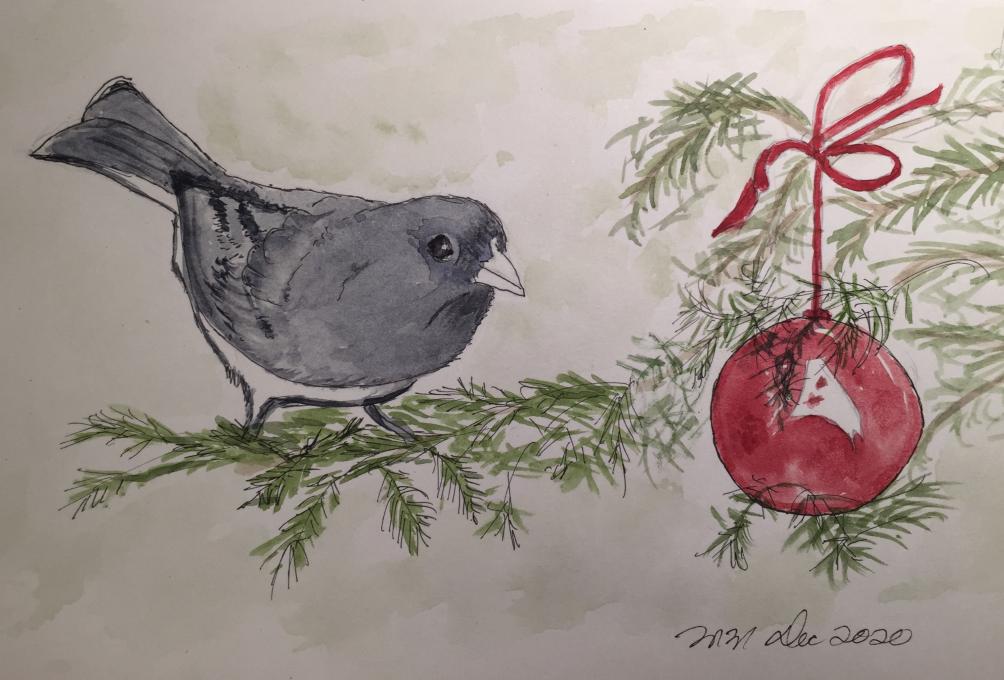


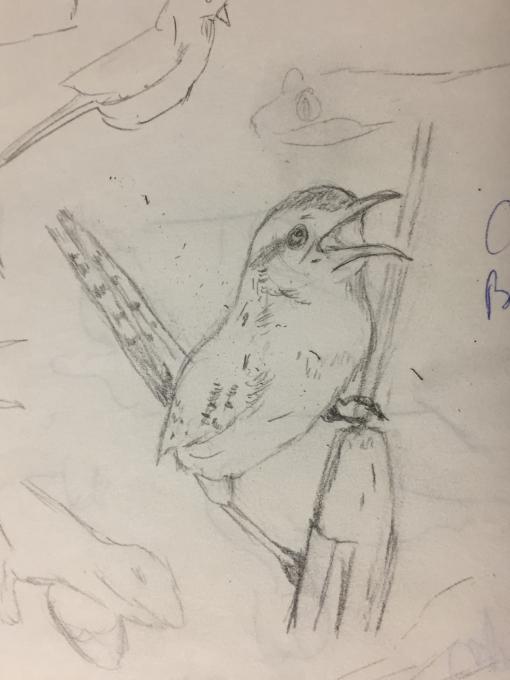
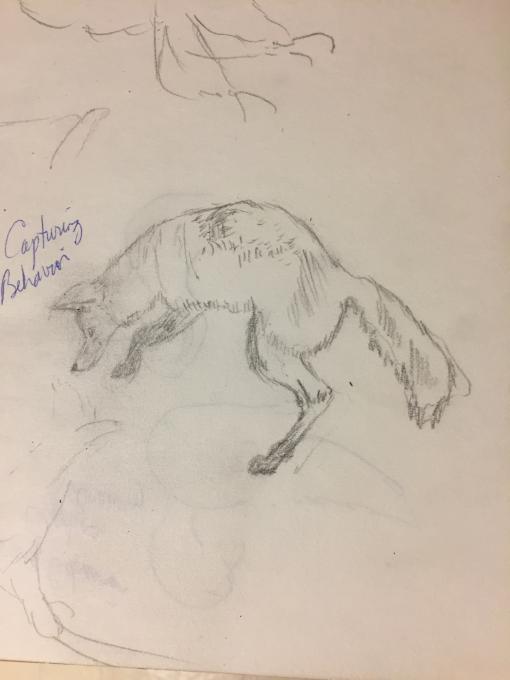 When I started with the quick gesture drawing of a still object timed I found that much easier and I liked it better than trying to capture the moving image. I found the Pintail Duck impossible for myself and gave up. The Mourning Doves at the feeder were ok because they sat long enough to get something on the paper. When I refined both the Wren and the Coyote original gesture drawing I was pleased to see that the proportions were not too bad. With the Wren I could see right away that the space between the head and tail ( the negative space) was not large enough and I corrected that distance. Over all I got the head a bit too big for the body but decided to leave that as a reminder to myself. The bulrush and the bill were out a bit and I corrected that. A few other corrections were needed too but they were obvious and easy to change. I liked doing it this way. I used all the techniques you have taught us, first the quick gesture drawing, measuring the negative space between parts of the object, using my pencil to gauge proportion and slant, the shading teqnique for depth, short strokes with my pencil......I also used all the same techniques with the coyote to refine and I could refine more, I think the head is a bit small but it wouldn't take much to enlarge it a bit. Using negative space is very useful for me. When I use it to refine, I can see at a glance where I need to refine.
When I started with the quick gesture drawing of a still object timed I found that much easier and I liked it better than trying to capture the moving image. I found the Pintail Duck impossible for myself and gave up. The Mourning Doves at the feeder were ok because they sat long enough to get something on the paper. When I refined both the Wren and the Coyote original gesture drawing I was pleased to see that the proportions were not too bad. With the Wren I could see right away that the space between the head and tail ( the negative space) was not large enough and I corrected that distance. Over all I got the head a bit too big for the body but decided to leave that as a reminder to myself. The bulrush and the bill were out a bit and I corrected that. A few other corrections were needed too but they were obvious and easy to change. I liked doing it this way. I used all the techniques you have taught us, first the quick gesture drawing, measuring the negative space between parts of the object, using my pencil to gauge proportion and slant, the shading teqnique for depth, short strokes with my pencil......I also used all the same techniques with the coyote to refine and I could refine more, I think the head is a bit small but it wouldn't take much to enlarge it a bit. Using negative space is very useful for me. When I use it to refine, I can see at a glance where I need to refine.
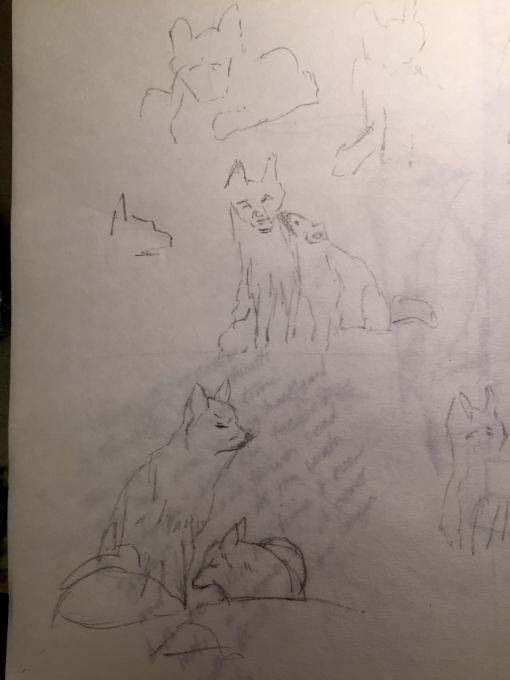 jI'm not s
jI'm not s 